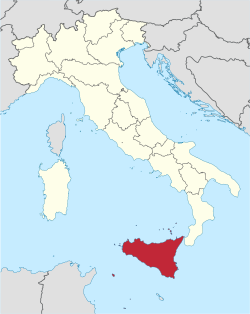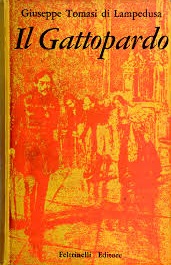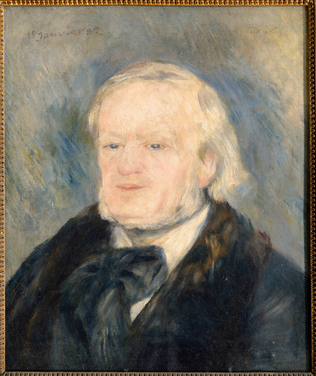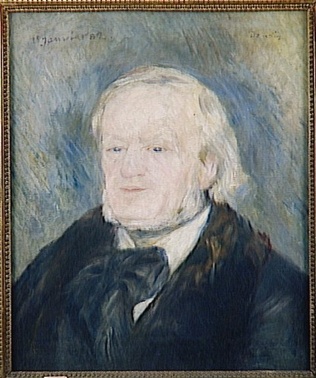讀《NATIONAL GEOGRAPHIC》 (1995年8月號Sicily 專題) :西西里 (Sicily)及其首府Palermo (巴勒莫)極簡史;兩部影片:《豹》 (The Leopard directed by Luchino Visconti 1963 ,"豹"的政治參與哲學,"鹽也七生"看電影)及《新天堂樂園》(Cinema Paradiso 1988 directed by Giuseppe Tornatore),黑手黨(Cosa Nostra): Travels in the City of Happiness' Sicily, Through the Eyes of the Leopard. 歌德 意大利旅記《義大利遊記》/ Goethe: Italian Journey. "Sicily is the clue to everything.” Goethe. Palermo 1882 Renoir Richard Wagner Out of Italy by Fernand Braudel.
https://www.facebook.com/hanching.chung/videos/773870534502691
黑手黨(Cosa Nostra)




NATIONAL GEOGRAPHIC 起碼有一集主題文章為Sicily 西西里 1995年8月號 五百萬人,七十萬;August 1995 現在人口約四百八十萬
Afternoon in Palermo
羅馬人一書的地圖 西元約200 年的羅馬帝國 頁30 ~ 31
Sicily 自古是羅馬與加太基的爭地盤
巴諾慕斯是首府的古名嗎
“To have seen Italy without having seen Sicily is not to have seen Italy at all, for Sicily is the clue to everything.” Goethe
Now on exhibit - Watercolor International VI - Thessaloniki , Greece
Thomas W Schaller - Watercolor Artist
22x15 inches
。。。。
36 Hours in Palermo, Italy: Things to Do and See
The New York Times
https://www.nytimes.com › 2023/08/17 › travel › things-...
Aug 17, 2023 — Street food and medieval churches meet natural wine bars and compelling new museums in Sicily's capital.
In a Former Mafia Stronghold, Art Remembers, and Warns
The New York Times
https://www.nytimes.com › Arts › Dance
May 25, 2022 — A public art campaign in Palermo, Sicily, is reminding residents of the city's grim Mafia years, and is encouraging them to resist creeping ...
https://www.nytimes.com/interactive/2023/08/17/travel/things-to-do-palermo-italy.html

請按圖案開啟擴大的視野



Allan LangdaleAllan Langdale
Palermo: Travels in the City of Happiness: Art, Architecture, and History in Sicily's Ancient Capital
Sicily | |
|---|---|
| Anthem: Madreterra | |
 | |
| Country | |
| Capital | Palermo |
| Government | |
| • President | Renato Schifani (FI) |
| Area | |
| • Total | 25,711 km2 (9,927 sq mi) |
| Population (2021)[1] (8.3% of Italy) | |
| • Total | 4,833,329 |
| • Density | 190/km2 (490/sq mi) |
歌德 Goethe:Selected Works. 《義大利遊記》 : Italian Journey《意大利遊記》
--Johann Wolfgang von Goethe
Richard Wagner
A great music lover, Renoir was one of the first admirers of Wagner in France. At the beginning of 1882, when the painter was travelling in the south of Italy, he had the opportunity to visit Palermo where Wagner was staying. After two fruitless attempts, Renoir was finally introduced to the "maestro" who, the day before, had put the final notes to Parsifal.
The course of this meeting is well known thanks to a letter from Renoir to one of his friends, dated 15 January 1882. Wagner showed himself to be very friendly. Over a few drinks, the two men made idle conversation for over three quarters of an hour before Renoir proposed a short sitting for the following day. He recounted this second meeting in his letter thus: "He was very happy but very nervous [...]. In short, I think I spent my time well, thirty five minutes is not long, but if I had stopped sooner it would have been better, because my model ended up by losing some of his good humour, and he became stiff. I followed these changes too closely [...]. At the end Wagner asked to see it. He said "Ah! Ah! It's true that I look like a Protestant minister". But I was very happy it wasn't too much of a flop: There is something of that admirable face in it".
Twenty years later the art critic Julius Meier-Graefe came back to this "little souvenir": "it is a remarkable document. It reveals certain aspects of Wagner with an astonishing, almost pitiless, psychology. One can not say how aware the painter was of this: but in any case, the painting reveals just how free the artist felt when faced with the object of his admiration".
Sicily, Through the Eyes of the Leopard

 Cover of the first edition | |
| Author | Giuseppe Tomasi di Lampedusa |
|---|---|
| Original title | Il Gattopardo |
| Country | Italy |
| Language | Italian |
| Genre | Novel |
| Set in | Sicily |
| Published | 1958 |

Johann Wolfgang von Goethe (1749-1832): Italian Journey, 1786-7, published 1816-7 Introductory Note
Everybody knows that the thrones of European literature are occupied by the triumvirate referred to in Finnegans Wake as Daunty, Gouty and Shopkeeper, but to most English-speaking readers the second is merely a name. German is a more difficult language to learn to read than Italian, and whereas Shakespeare, apparently, translates very well into German, Goethe is peculiarly resistant to translation into English; Hölderlin and Rilke, for example, come through much better. From a translation of Faust, any reader can see that Goethe must have been extraordinarily intelligent, but he will probably get the impression that he was too intelligent, too lacking in passion, because no translation can give a proper idea of Goethe’s amazing command of every style of poetry, from the coarse to the witty to the lyrical to the sublime. The reader, on the other hand, who does know some German and is beginning to take an interest in Goethe comes up against a cultural barrier, the humorless idolization of Goethe by German professors and critics who treat every word he ever uttered as Holy Writ. Even if it were in our cultural tradition to revere our great writers in this way, it would be much more difficult for us to idolize Shakespeare the man because we know nothing about him, whereas Goethe was essentially an autobiographical writer, whose life is the most documented of anyone who ever lived; compared with Goethe, even Dr Johnson is a shadowy figure. from Auden, W.H. and Elizabeth Mayer. “Introduction.” Goethe: Italian Journey. London: Penguin, 1970.《義大利遊記》 : Italian Journey《意大利遊記》
Auden, W.H. and Elizabeth Mayer. “Introduction.” Goethe: Italian Journey. London: Penguin, 1970,508頁。這篇導論很值得一讀,文末有譯者的翻譯論。
1962年的譯本,由Collins 出版。我記得也出版過Auden單讀翻譯的部分,可能只百來頁。
Goethe: Italian Journey. London: Penguin, 1970. 副標題是著名 (藝術史名家多有專文討論)的一句:Et in Arcadia ego.
我在2011年查過中國的兩翻譯本,錯誤處類似。
2011.10.7 W. v 歌德 意大利旅記 長沙: 湖南文藝出版社 2006
------
黃郁珺《十八世紀英國紳士的大旅遊》台北:唐山,2008這本是輔仁大學的歷史所碩士論文的出版 (西洋史叢書的第二本)。還有很認真的學生在撰寫論文,並且有機會出版,是很可喜、可賀的事。 論文處理的主題很重要和有趣,寫得也很用心。大旅遊的目的是教育 ,其實可能含蓋歐洲各名城和地方, 所以我弄不清楚是否該包括希臘。無論如何,本書以義大利為主。 基本上,重要的英文和漢文文獻都提到了, 似乎只有一夲書的書名前後不一:The Compleat Gentlemen (p.33) vs. The Complete Gentlemen (p.46) ;容易令人誤解的”public school” (現在多改稱為independent school),作者用「公學」,而引張漢裕翻譯的《國富論》 則採用錯誤的「公立學校」。不過這些是微不足道的小毛病。 如果有索引,那就相當好了。
我只舉一小例說明作者的細心。118頁的注94中指出:「…..此處趙乾龍所譯歌德《意大利遊記》將privy 譯為「客房」,疑為「廁所」之誤植。…..」 我們看哥德的上下文,知道英譯的屋外簡易廁所的privy ,比較合脈絡。妙的是,我查另外一本湖南文藝出版社(2006) 的翻譯,也用「客房」。
這讓我想起吉川幸次郎的《漢武帝》中,引《漢書‧外戚傳》中說:衛子夫「於軒中得幸」。吉川先生引高木正一先生指出漢末的《 釋名》說:「廁或曰軒」。
http://debbiejlee.com/ageofwonder/goethe.pdf
有照片
Malcesine, near Verona (pp. 44-7)
As I had planned, early in the morning I walked to the old castle, which, since it is without gates, locks, or sentries, is accessible to anyone. I sat down in the courtyard facing the old tower, which is built upon and into the rock. I had found an ideal spot for drawing, at the top of three or four steps that led to a locked door. In the frame of this door stood a little carved stone seat of the kind one can still come across in old buildings of our country.
I had not been sitting there long before several persons entered the courtyard, looked me over and walked up and down. Quite a crowd gathered. Then they came to a stop and I found myself surrounded. I realized that my drawing had created a sensation, but I did not let this disturb me and went on calmly with my work. At last a somewhat unprepossessing-looking man pushed himself forward, came up close to me and asked what I was doing there. I replied that I was drawing the old tower so as to have a memento of Malcesine. This was not allowed, he said, and I must stop at once. Since he spoke in Venetian dialect which I hardly understand, I retorted that I didn’t know what he was saying. At this, with typical Italian nonchalance he tore the page up, though he left it on the pad. When this happened I noticed that some of the bystanders showed signs of indignation, especially one old woman who said this wasn’t right. They should call the podestá, who was the proper judge of such matters. I stood on the step with my back against the Malcesine castle door and took in the faces of the crowd, which still kept growing. The eager stares, the goodnatured expression on most of them and all the other characteristics of a crowd of strange people afforded me much amusement. I fancied I saw before me the chorus of ‘Birds’, whom, as the ‘True Friend’, I had so often made fun of on the stage of the Ettersburg theatre.
By the time the podestá arrived on the scene with his actuary, I was in the highest spirits and greeted him without reserve. When he asked me why I had made a drawing of their fortress, I said modestly that I had not realized that these ruins were a fortress. I pointed to the ruinous state of the tower and the walls, the lack in gates, in short, to the general defenseless condition of the whole place, and assured him it had never crossed my mind that I was drawing anything but a ruin. He answered: if it were only a ruin, why was it worth noticing? Wishing to gain time and his good will, I went into a detailed exposition; they probably knew, I said, that a great many travelers came to Italy only to see ruins, that Rome, the capital of the world, had been devastated by the Barbarians and was now full of ruins which people had drawn hundreds of times, that not everything from antiquity had been as well preserved as the amphitheater in Verona, which I hoped to see soon.
The podestá stood facing me, but on a lower step. He was a tall, though hardly a lanky, man of about thirty. The dull features of his stupid face were in perfect accord with the slow and obtuse way in which he put his questions. The actuary, though smaller and smarter, also did not seem to know how to handle such a novel and unusual case. I kept on talking about this and that. The people seemed to enjoy listening, and when I directed my words at some kindly-looking women, I thought I could read assent and approval in their faces. But when I mentioned the amphitheater in Verona, which is known here by the name ‘arena’, the actuary, who had been collecting his wits in the meantime, broke in: that might be all very well, he said, in the case of a world-famous Roman monument, but there was nothing noteworthy about these towers except that they marked the frontier between Venetia and the Austrian Empire, for which reason they were not to be spied upon. I parried this by explaining by some length that the buildings of the Middle Ages were just as worthy of attention as those of Greek and Roman times, though they could not be expected to recognize, as I did, the picturesque beauty of buildings which had been familiar to them since childhood…
[Goethe says he’s not from the Austrian Empire, he’s from Frankfurt-am-Main. A young woman has heard of it, she tells them to send for Master Gregario who lived there for many years.] Master Gregario: “Signor Podestá, I am convinced that this man is an honest and educated gentleman who is traveling to enlarge his knowledge. We should treat him as a friend and set him at liberty, so that he may speak well of us to his countrymen and encourage them to visit Malcesine, the beautiful situation of which so well deserves the admiration of foreigners.” Verona amphitheater - inside Verona amphitheater - streetside
Verona (pp. 52-3)
The amphitheater is the first great monument of the ancient world I have seen, and how well preserved it is! When I entered it, and even more when I wandered about on its highest rim, I had the peculiar feeling that, grand as it was, I was looking at nothing. It ought not to be seen empty but packed with human beings, as it was recently in honor of Joseph I and Pius VI. The Emperor, who was certainly accustomed to crowds, is said to have been amazed. But only in ancient times, when a people were more of a people than today, can it have made its full effect. Such an amphitheatre, in fact, is properly designed to impress the people with itself, to make them feel at their best.
When something worth seeing is taking place on level ground and everybody crowds forward to look, those in the rear find various ways of raising themselves to see over the heads of those in front: some stand on benches, some roll up barrels, some bring carts on which they lay planks crosswise, some occupy a neighboring hill. In this way in no time they form a crater. Should the spectacle be often repeated on the same spot, makeshift stands are put up for those who can pay, and the rest manage as best they can. To satisfy this universal need is the architect’s task. By his art he creates as plain a crater as possible and the public itself supplies its decoration. Crowded together, its members are astonished at themselves. They are accustomed at other times to seeing each other running hither and thither in confusion, bustling about without order or discipline. Now this many-headed, manyminded, fickle, blundering monster suddenly sees itself united as one noble assembly, welded into one mass, a single body animated by a single spirit. The simplicity of the oval is felt by everyone to be the most pleasing shape to the eye, and each head serves as a measure for the scale of the whole. But when the building is empty, there is no standard by which to judge whether it is great or small.
The Veronese are to be commended for the way in which they preserved this monument. The reddish marble of which it is built is liable to weather, so they keep restoring the steps as they erode, and almost all of them look brand-new. An inscription commemorates a certain Hieronymus Maurigenus and the incredible industry he devoted to this monument. Only a fragment of the outer wall is left standing and I doubt if it was ever even completed. The lower vaults which adjoin a large square called il Bra are rented to some artisans, and it is a cheerful sight to see these caverns again full of life. Goethe 4 Palazzo Comunale, Padua Titian, Diana and Actaeon, 1556-9 Piazzetta, St John the Baptist, 1740s
Padua (pp. 72-3)
In the place of assembly belonging to a religious brotherhood dedicated to St. Anthony, there are some ancient paintings, reminiscent of the old German school, among them some by Titian, which show a progress in the art which no painter on the other side of the Alps has so far made. I also saw some more modern paintings. Though no longer able to reach the sublime dignity of their predecessors, these artists have been extremely successful in the lighter genre. The beheading of St. John the Baptist by Piazzetta is, after allowing for the mannerisms of this master, a very good painting…
In the Church of the Eremitani I saw some astonishing paintings by Mantegna, one of the older masters. What a sharp, assured actuality they have! It was from this actuality, which does not merely appeal to the imagination, but is solid, lucid, scrupulously exact and has something austere, even laborious about it, that the later painters drew their strength, as I observed in Titian’s pictures. It was thanks to this that their genius and energy were able to rise above the earth and create heavenly forms which are still real. It was thus that art developed after the Dark Ages.
The audience chamber of the Palazzo Comunale…is such a vast closed-in shell that, even when one has just come from seeing it, one can hardly retain its image in one’s mind. It is three hundred feet long, one hundred feet wide and, from floor to vaulted ceiling, one hundred feet high. People here are so used to living out of doors that the architects were faced with the problem of vaulting over a market square, so to speak. Such a huge vaulted space gives one a strange feeling. It is a closed-in infinity more analogous to human nature than the starry sky is. The sky draws us out of ourselves, but this gently draws us back into ourselves.
蒙田 Michel de Montaigne 逝世一百八十二年後出版《義大利遊記》。
Out of Italy Hardcover – December 1, 1991
- Hardcover: 248 pages
- Publisher: Flammarion; First Edition edition (December 1, 1991)
by Fernand Braudel (Author)

By 1450, all of Europe and the Mediterranean were influenced by the teachings, the economies and the intellect of Italy. Its predominance had been achieved through a long history of effort, patience and strategic victories. How had Italy, or rather a handful of Italian cities, a few men all told, succeed in acquiring and maintaining a position of dominance vis-à-vis Byzantium, Islam, and western Europe?
In this fascinating and insightful study, Fernand Braudel, one of the most distinguished historians of our time, examines the many-sided phenomenon of greatness that characterized Italy during the two centuries spanning the Renaissance, Mannerism, and the Baroque-- dazzling, multicoloured Italy, whose radiance shone all over Europe. Braudel perceptively describes the extent, nature and force of Italian influence abroad, analyses the complex interaction between art, science, politics and commerce, and proposes a paradigm of Italy's extraordinary cultural flowering.
This is the first English translation of Braudel's now-classic text. The volume is beautifully designed and illustrated with works by Michelangelo, Raphael, Titian, Ghirlandaio, van Eyck, Rubens, Caron, and Poussin. It is an invaluable work for students of Italian history who will find that their understanding of Italian culture has been immeasurably enriched.
Fernand Braudel was born in Luméville-en-Ornois in 1902. He graduated in history in 1923, and subsequently taught in Algiers, São Paulo and Paris. Beginning in 1940 he spent five years as a prisoner of war in Germany, during which he wrote his thesis La Méditerranée et le monde méditerranéen à l'époque de Philippe II, published in France in 1949. In 1946 he became a member of the editorial board of the journal Annales, founded by Marc Bloch and Lucien Febvre. In 1949 he succeeded Febvre at the College de France. From 1962 to his death in 1985 Braudel was chief administrator of the Maison des Sciences de l'Homme.
Fernand Braudel achieved a worldwide reputation for his line of approach that united history and other social studies. His Civilization and Capitalism and The Mediterranean were widely acclaimed.
The second volume of Fernand Braudel's monumental The Identity of France was published in 1990.






No comments:
Post a Comment